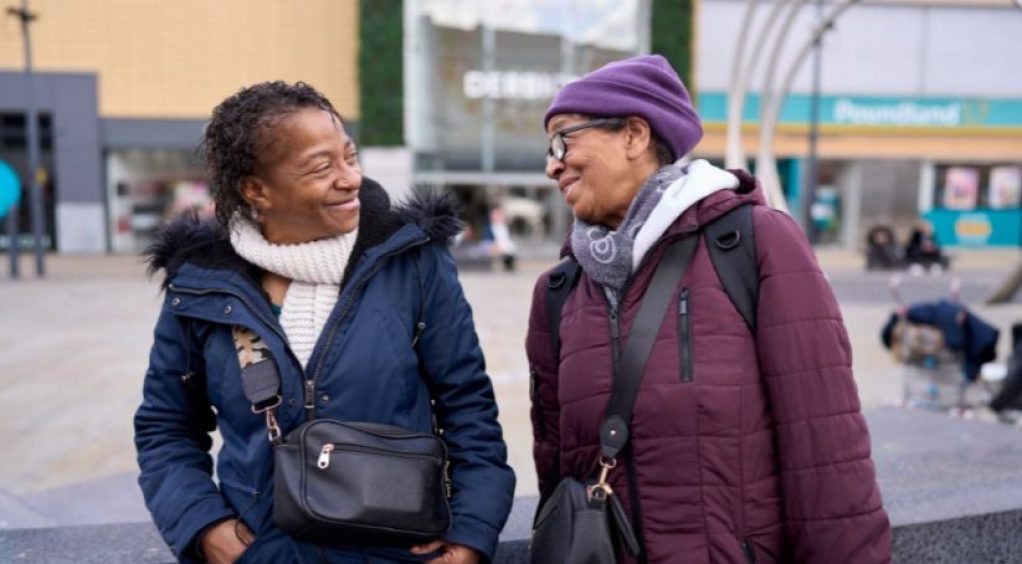NHS five year plan will prioritise prevention of ill health
NHS organisations in Derby and Derbyshire will change the way they allocate resources and work with patients over the coming five years.
They will “reset” the way NHS services are provided so activity is more:
- Focused on preventing of ill health and reducing inequity of provision
- Personalised to individuals, so they feel more in control
- Led by intelligence – leading to better decisions
- Integrated in the way services are provided for people
This policy has been agreed in NHS Derby and Derbyshire’s plan five year plan for 2023 to 2028, called the Joint Forward Plan. The plan was agreed by the NHS Derby and Derbyshire Integrated Care Board on Thursday, 20 July.
This is the local NHS’s contribution towards the Integrated Care Strategy for Derby and Derbyshire, which was agreed recently by local councils, voluntary and community organisations and by NHS organisations.
Chris Clayton, NHS Derby and Derbyshire chief executive, said: “We must change the way NHS services are provided in our area.
“We need to put more resources into helping people to stay well, and to manage any treat any ill health or disability they do have.
“As more people live longer with multiple conditions we must also work in an integrated way – NHS staff alongside council social workers, care workers and with voluntary and community organisations.
“Working together will not only help people to live as healthy a life as they can, it will also be more efficient and allow us to use NHS resources to achieve the greatest benefit possible.”
A series of priorities for 2023/24 have been agreed:
- Increase take up of support for people who are at risk of developing diabetes
- Increase the numbers of people referred to smoking cessation programmes
- Increase the numbers of at risk people referred to weight management services
- Meet the national target of 67% diagnosis of dementia
- Double the numbers of women who access specialist mental health services for the time before and after childbirth
- Achieve the national targets for diagnosis and treatment of cancer, and to increase take-up of screening
- Reduce waiting lists for diagnosis by 30% over 12 months
- Reduce frailty-related falls by 15%
- Reduce waiting lists for muscular-skeletal services by 20%
- Increase the numbers of at risk of a heart attack to receive treatment or support
- Increase the number of both children and adults who have a mental health condition who access services by 30%
- Reduce the number of people who have autism or learning disability who are cared for in in-patient beds, or who are placed out of the Derbyshire area
The plan sets out the need to change the way NHS services are provided, because:
- The health of people locally has got worse between 2015 and 2021– with higher levels of early or avoidable deaths in Derby City Council areas, and a reduction in wellbeing among the Derbyshire County Council population. Both areas have seen an increase in the numbers of working age adults who are disabled.
- There is a need to prioritise preventions and treatment of the diseases that cause the most ill health – cancer, cardiovascular disease, musculoskeletal disorders; mental disorders, neurological disorders, and chronic respiratory disease
- The ageing population means people are increasingly living with multiple conditions for longer
- Patients feel less in control of their healthcare in 2022, compared to 2018, despite the fact that better personal control produces better health outcomes
- There is a need to use technology better
- There is a need to recruit and retain more GPs and nurses
- There is a challenge to NHS finances that can be addressed through more efficient working
The five year plan 2023-28 sets out an action plan to:
Allocate greater resource to activities that will prevent, postpone, or lessen disease complications and reduce inequity of provision
- More investment in general practice services and workforce
- Change the way acute hospital services work together with general practice
- Focus resources on the local areas where people’s health is generally worse
Give the teams working in our localities the authority to determine the best ways to deliver improvements in health and care delivery for local people
- More use of teams working in local areas, made up of NHS clinical staff, council social services and voluntary and community sector professionals. This approach is already developing through the TeamUp way of working.
Give people more control over their care
- Helping people to understand their conditions and the choices they can make
- Personalised care and shared decision making
Identify and remove activities from the provision of care which result in time and cost being expended but do not materially improve patient outcomes
- Identifying opportunities to reduce waste and work more efficiently
- Improving access to diagnosis in community settings
- Ensuring people are able to leave hospital as soon as possible
- Providing more support to people who have complex mental ill health, learning disabilities or autism
Prioritise the improvement of the system’s intelligence function and the capacity and capability of its research programme
- Proactively identifying and supporting people who may be at risk of ill health
- Using data to optimise processes and remove bottlenecks
Progress on the plan will now be monitored by the NHS Derby and Derbyshire Integrated Care Board, together with system partners.

